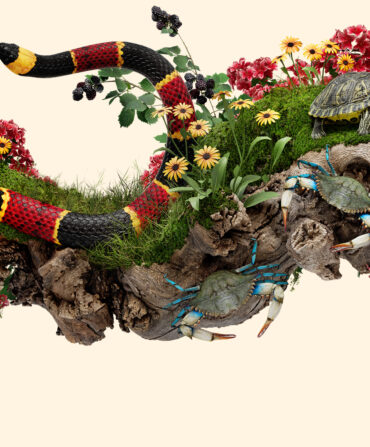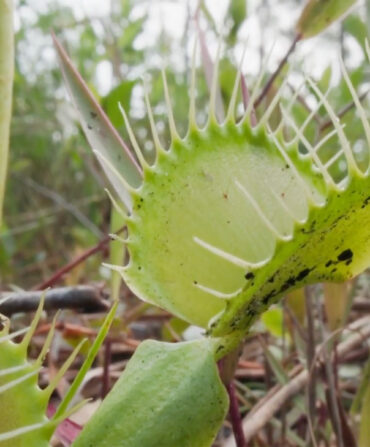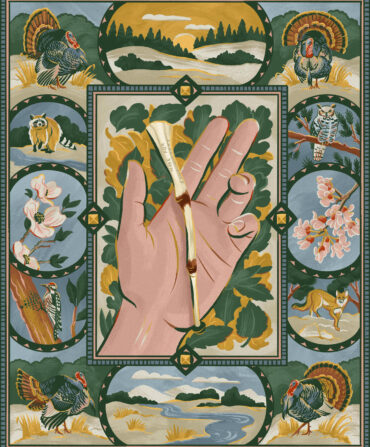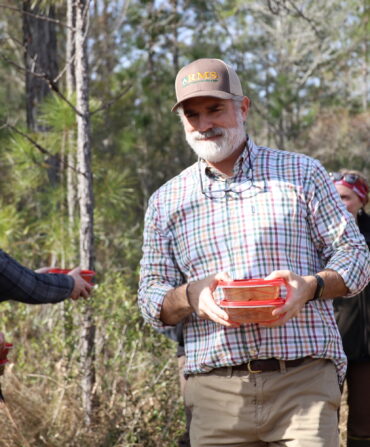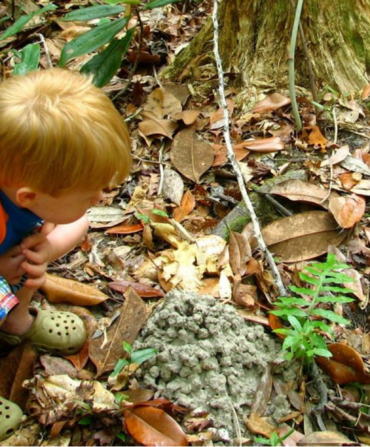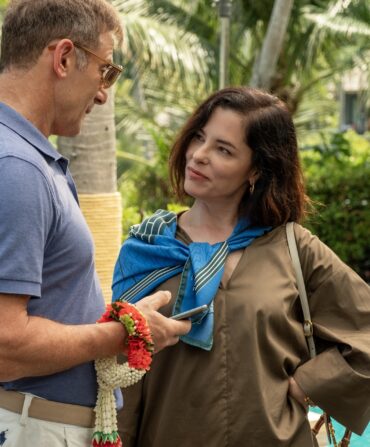Land & Conservation
The Lowcountry Land Trust Unveils a Beautiful New Center for Conservation in Charleston
Reclaimed wood, native landscaping, and local art shine on fifty acres that will soon house a county park
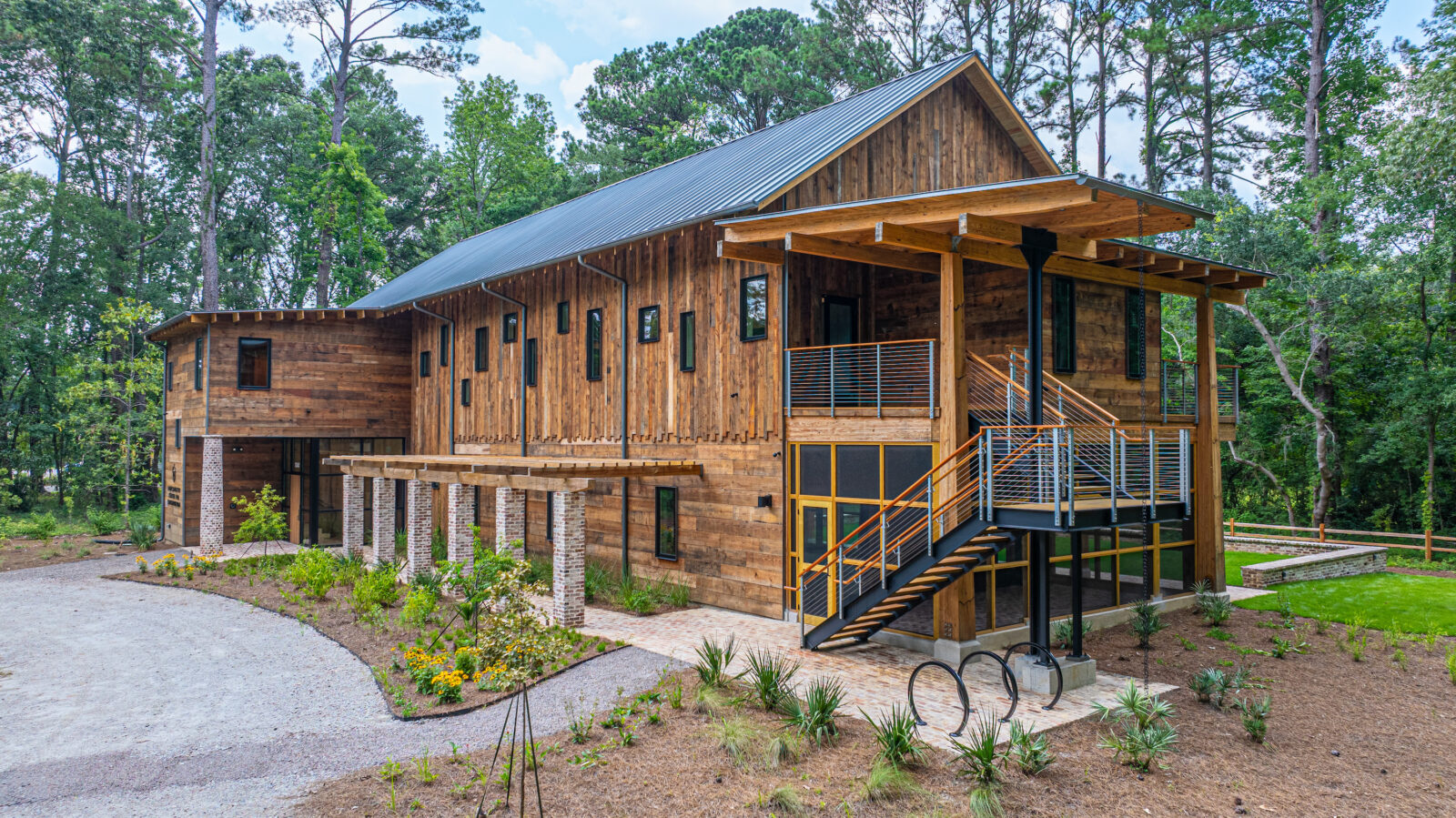
Photo: John D. Smoak III
The exterior of the Lowcountry Land Trust’s Center for Conservation.
For nearly one hundred years, the home of the late philanthropist and equestrian Emily Ravenel Farrow sat on fifty scenic acres along the Ashley River in Charleston, South Carolina. In keeping with her vision, the property once known as Ashem Farm is now the Lowcountry Center for Conservation, home of the Lowcountry Land Trust and future site of a new county park.
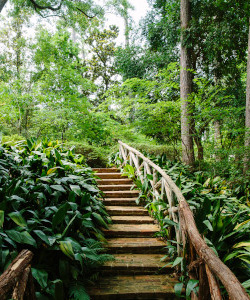
“She wanted her land to be a place where people could come,” says Catherine McCullough, Lowcountry Land Trust’s chief advancement officer. Before her death in 2011, Ravenel Farrow placed the property under a conservation easement, with the understanding that part of it would house the offices of the land trust, a nonprofit she had long supported. Since 1986, the organization has protected over 163,000 acres around South Carolina by acquiring parcels big and small, including the iconic Angel Oak Preserve on Johns Island and recently, Little Goat Island, a barrier island off the coast of Isle of Palms.
Just a little over a year ago, Lowcountry Land Trust broke ground on what would become much more than an office, tapping an all-local team of architects and designers to create a building that would sit on just four of the property’s fifty acres and blend into the forest. “The real goal of the center is to be a gathering place for conservation groups,” McCullough says. “Upstairs, it houses our space to do our work, but the main floor is an invitation to partner organizations and community groups to gather so that we can collectively work towards our goals for the Lowcountry.”
Soon, the public will be able to enjoy the property, too. In early 2026, the Stono Creek County Park will open on the rest of the acreage, featuring walking trails and some of the original structures from the farm.
Below, peek inside the space, which, as communications director Victoria Bock says, “makes you feel as though you’re floating in a treehouse.”
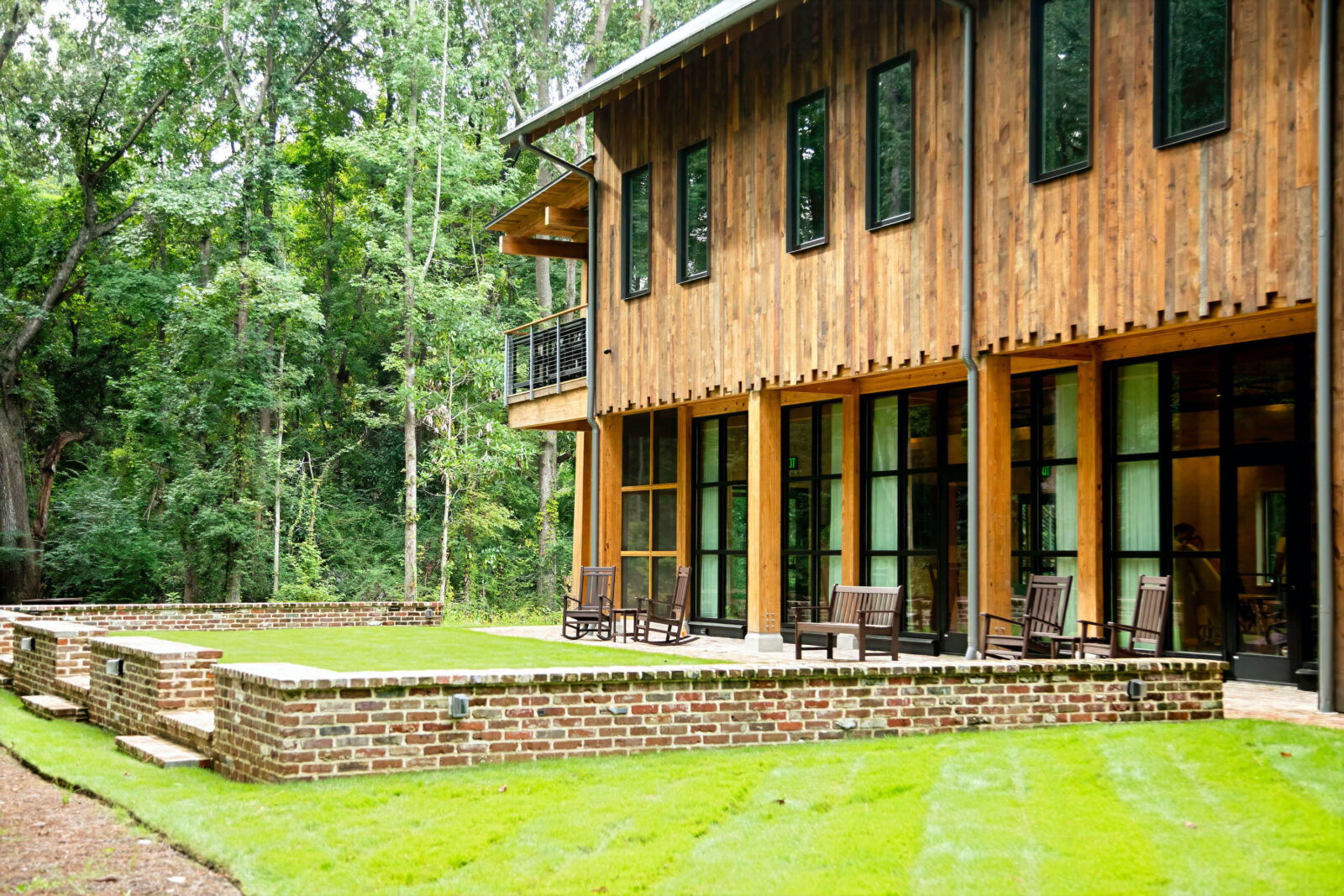
Photo: justin falk
Local firms Reggie Gibson Architects and Willis Hagood Construction took on the project, focusing on infusing Southeastern heritage and sustainability in the building components. The cypress that constitutes the walls and ceilings was a byproduct of the milling process that would have normally been discarded. Much of the wood on the exterior is southern yellow pine, and the siding comes from reclaimed floors from a school in Augusta, Georgia, built in 1918.
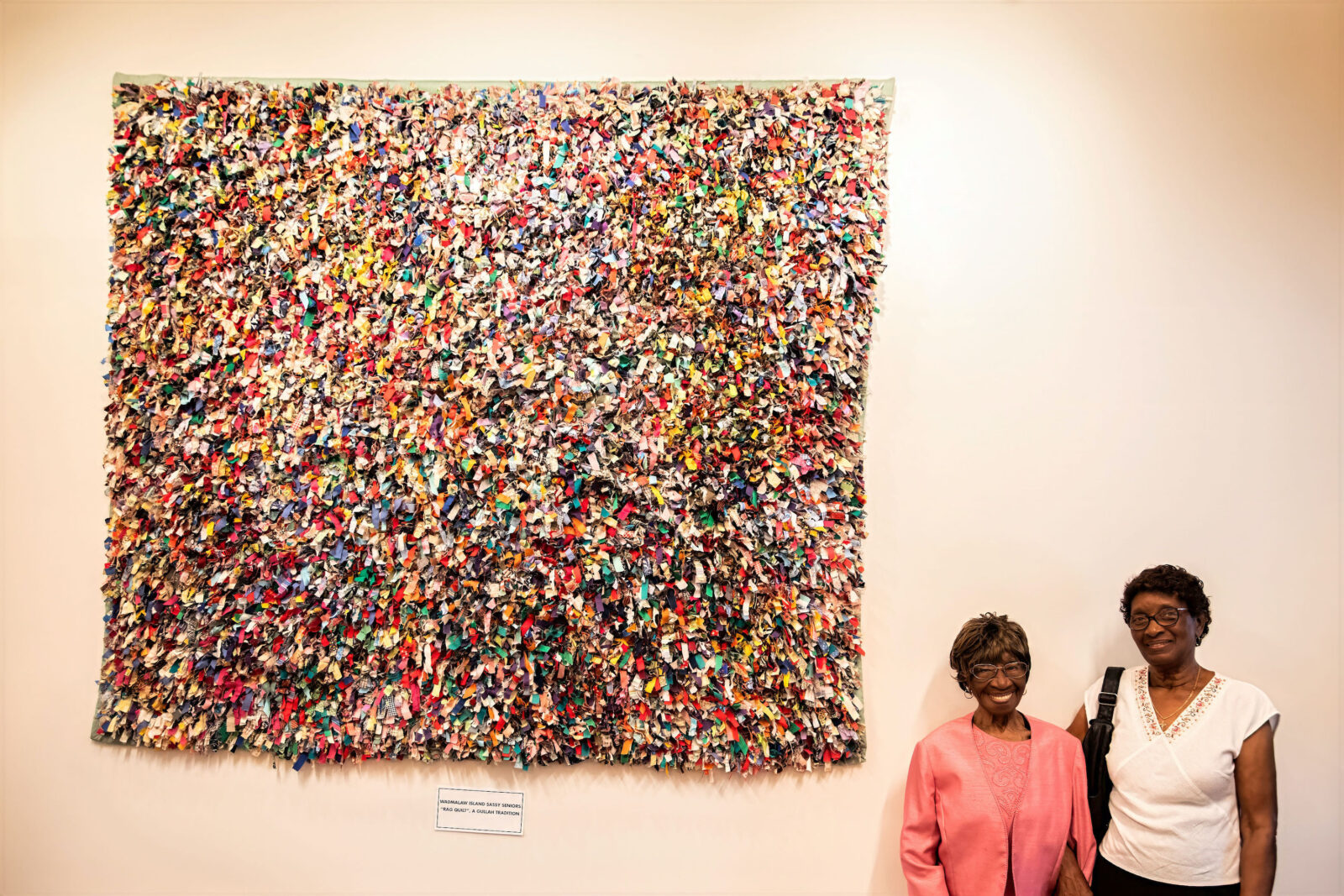
Photo: justin falk
101-year-old Adele Pedersen of Wadmalaw Island (pictured at left) and her quilting group, the Sassy Seniors, made this traditional Gullah Geechee rag quilt.
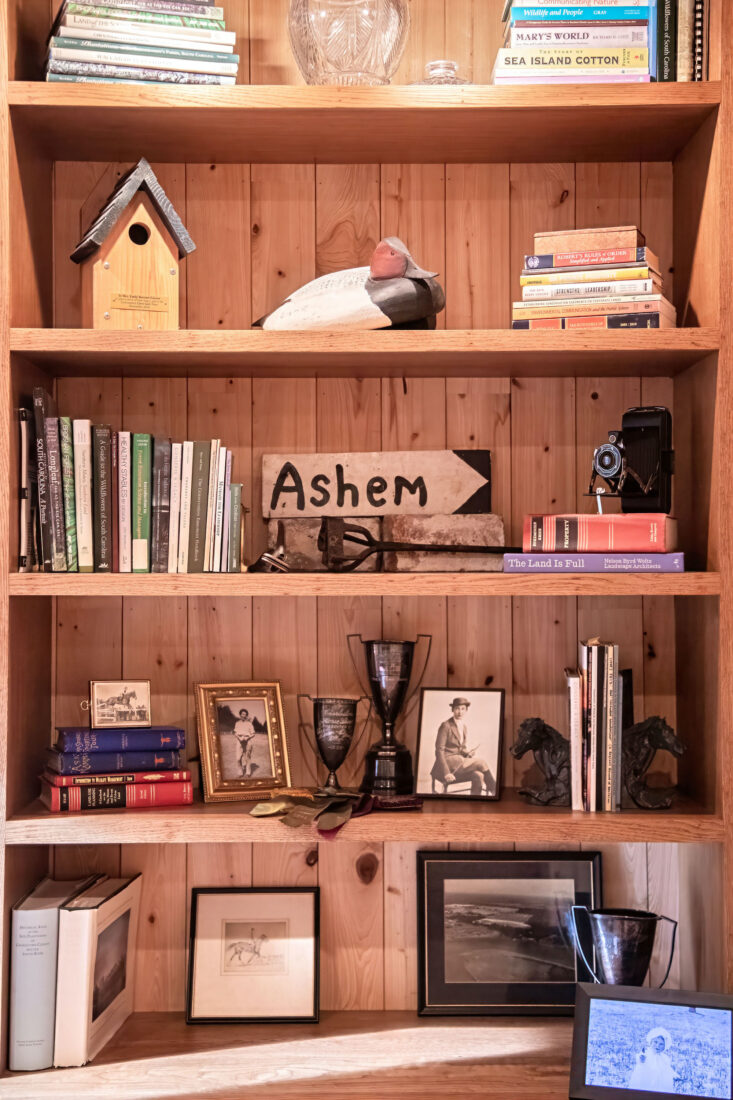
Photo: justin falk
Nods to Emily Ravenel Farrow sit on a shelf upstairs, including her old camera, the sign for the former farm, and cups from her equestrian competitions.
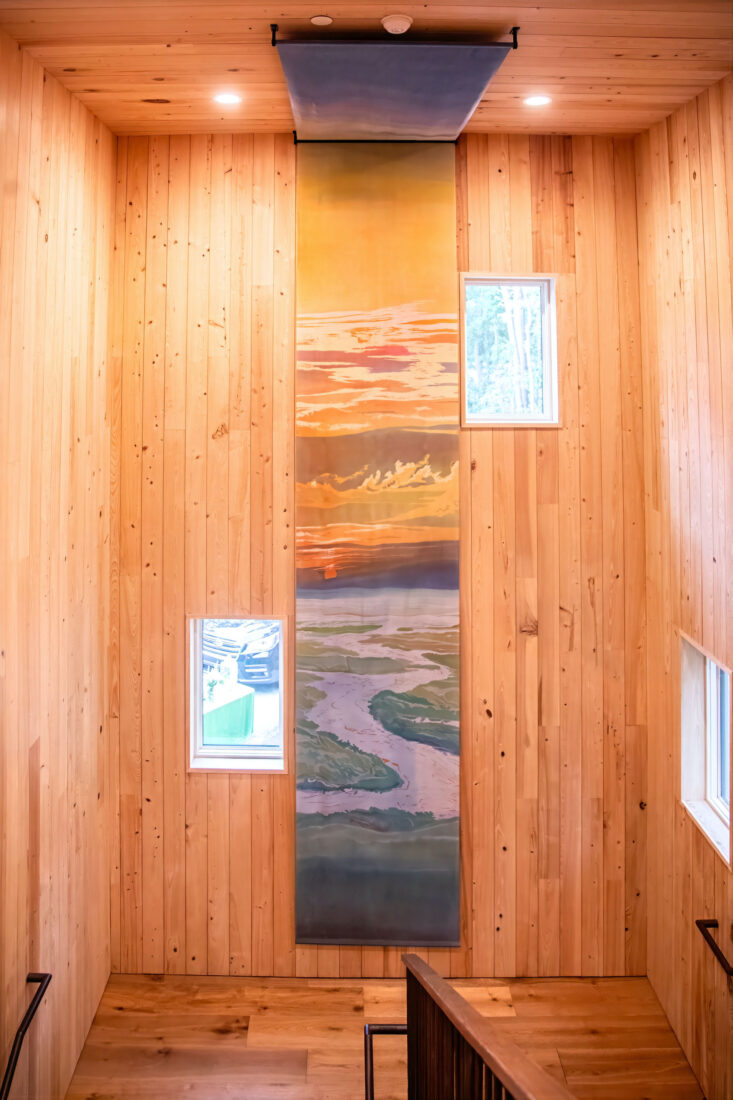
Photo: justin falk
Lowcountry Land Trust supporter Kent MacDougal donated this batik by Mary Edna Fraser, which hangs in the stairwell and depicts the Toogoodoo Creek in Charleston.
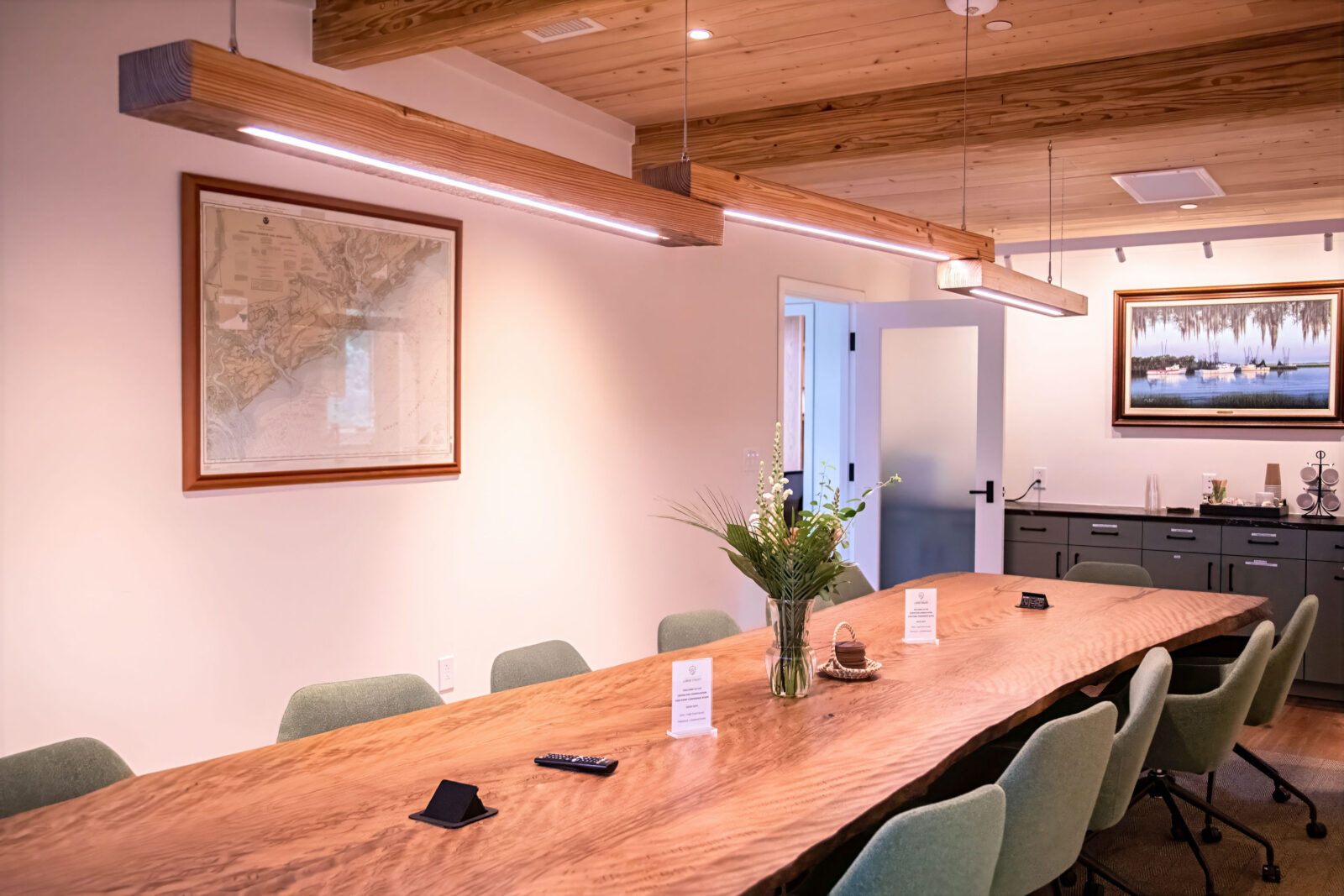
Photo: justin falk
Haygood Construction custom-made this conference table from slabs of live oak and created the geometric light fixture overhead to match. “Andrew Haygood said, ‘You can’t have a commercial conference table in this room, so we’re going to make you a special table,’” McCullough says. “It was so wonderful how our builders fell in love with the project and brought their own touches to the design.”
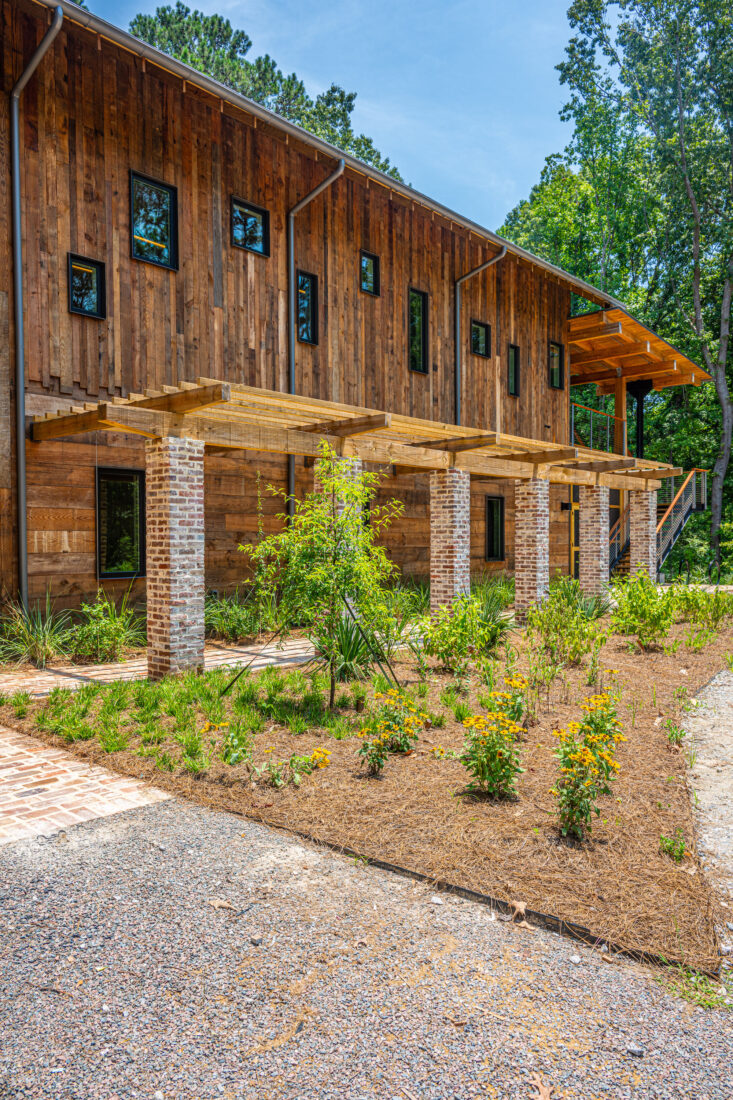
Photo: John D. Smoak III
The team sourced the brick for these columns from a defunct masonry wall at a building on King Street in downtown Charleston. In front of them, the landscaping invites pollinators; in total, thirty plant species dot the grounds, including American beautyberry, Southern shield fern, creeping phlox, and blue-eyed grass, plus trees like magnolias, bald cypress, and red cedar.
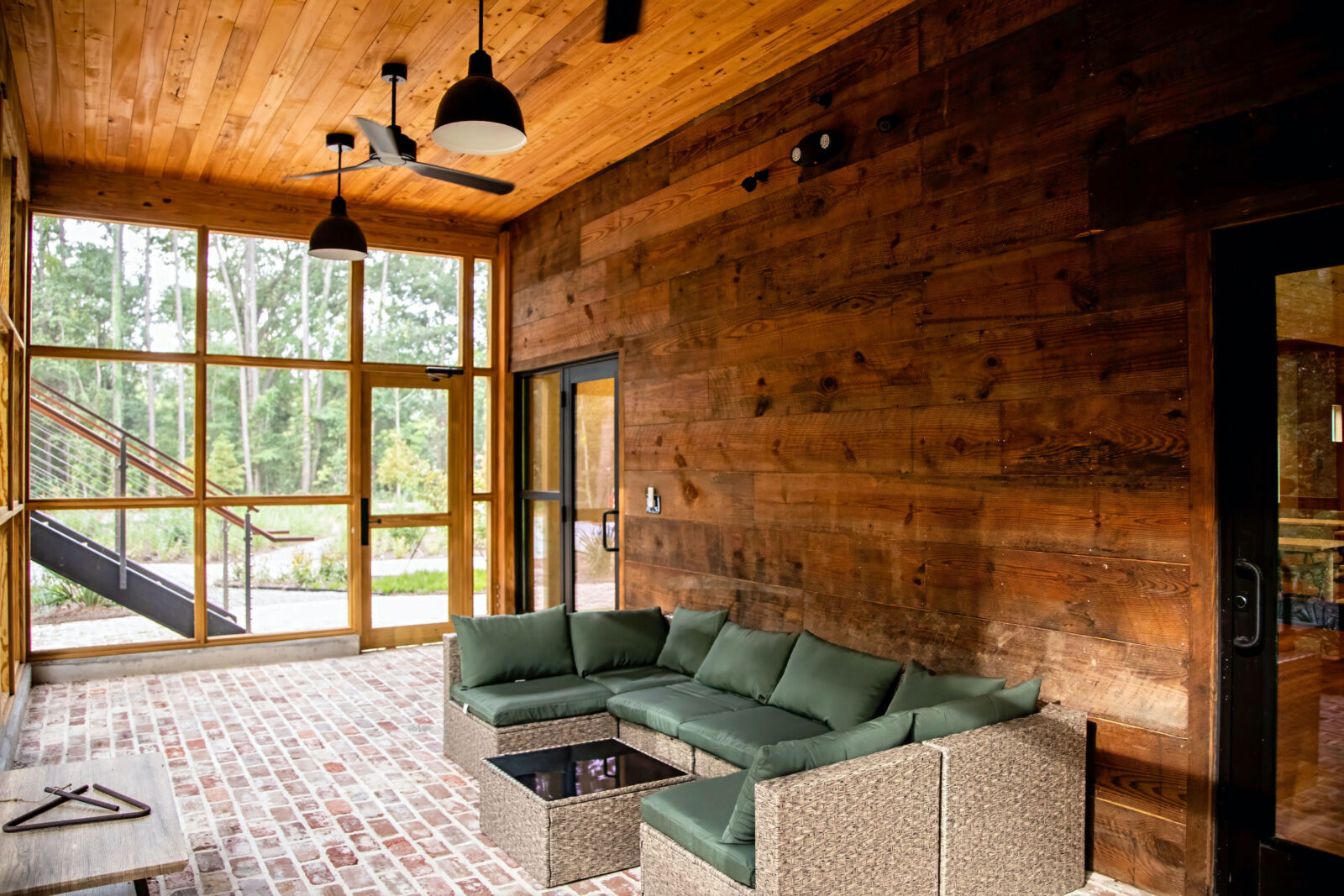
Photo: justin falk
A cozy screened-in porch bookends one side of the building.


